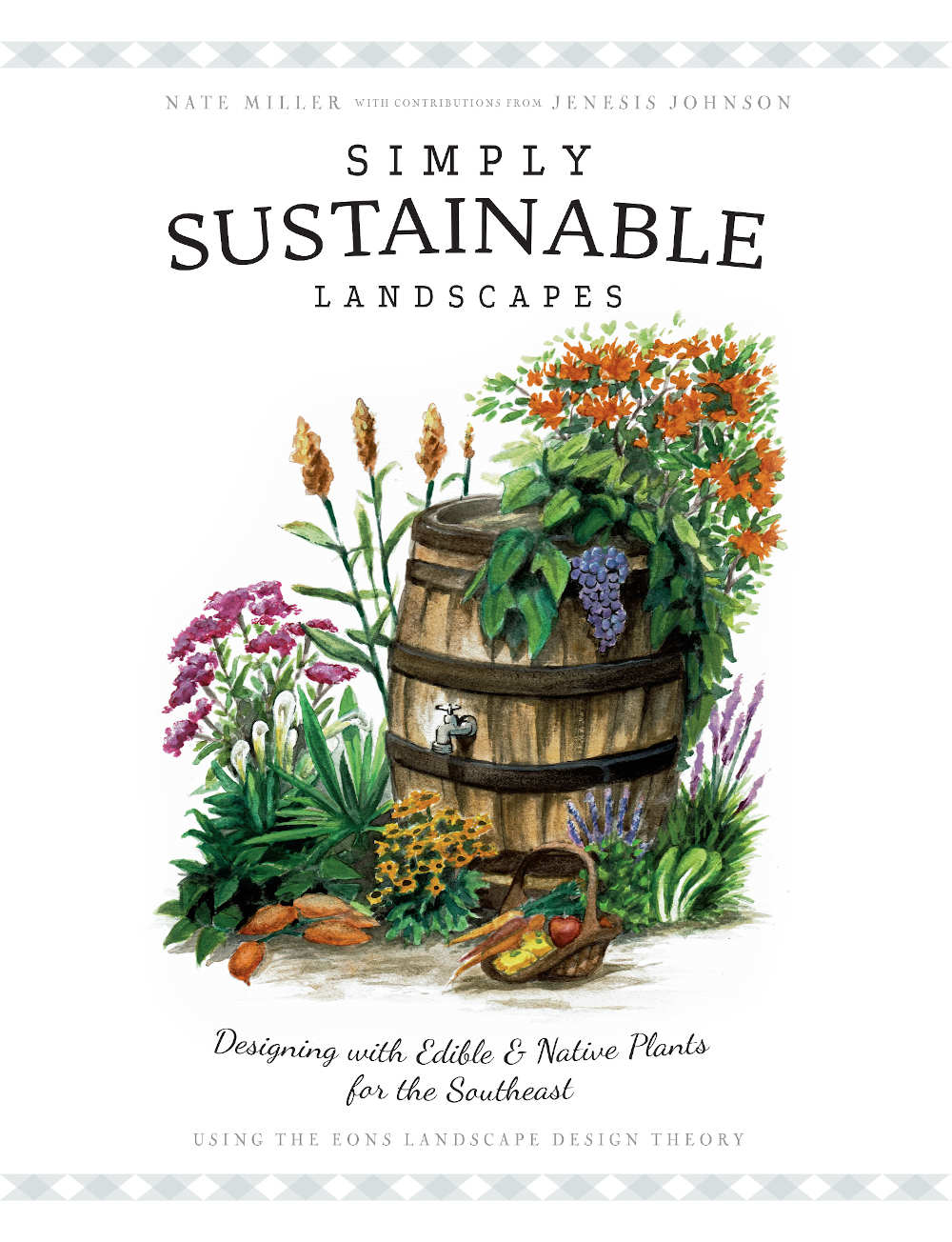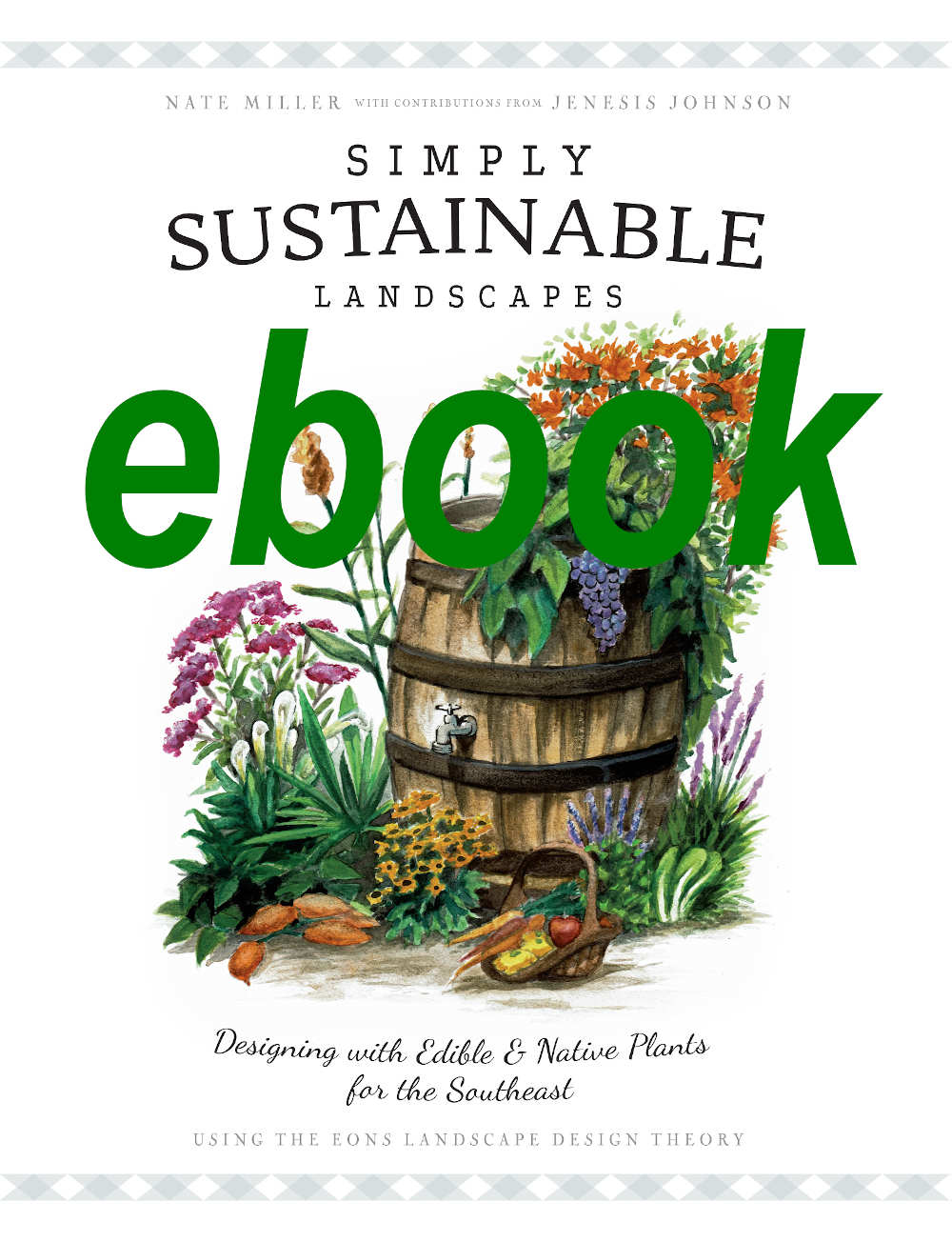Simply Sustainable Landscapes is available locally in paperback, by ebook, and on Amazon.
In Simply Sustainable Landscapes, we take you on a horticultural journey first through history to trace the origins of landscape design in the United States. Next you will proceed through the elements of design, it’s process and creation of a landscape design. The end of your journey culminates with 25 projects Nate and Jenesis designed and developed throughout the Southeast to serve as inspirations in your quest for creating a successful landscape design. Buy the ebook directly from Nate.

Designing with Edible and Native Plants for the Southeast
BUY LOCAL in North Carolina and Virginia
Purchase PAPERBACK on Amazon — $30.00 (load amazon)
Read Nate’s book on kindle unlimited with your Amazon account — FREE (load kindle)
Purchase the ebook directly from the author

ebook Simply Sustainable Landscapes and Supplemental Resources
ebook Simply Sustainable Landscapes is available as an electronic download through PayPal — $27.95
Supplemental Resources are notes compiled by Nate, years of experience and research, and material for the second edition — $12.00
Once you complete the PayPal purchase, you will receive an email or phone call from Nate. Be sure to check your spam box.
Nate says
In 2012, my coauthor, Jenesis Johnson, and I created the EONS Landscape Theory which I follow in all my designs. EONS stands for Edible, Ornamental, Native (plants) and Sustainable Methods (renewable energy, rain barrels, cold frames). This theory is the foundation for all of my landscape designs and central to the book Simply Sustainable Landscapes.
The EONS Theory will not only transform the concept of landscape designing in the Southeastern region, but also has the potential to reform landscape design across the United States.



 Jane Hannah Ruppe, 2021
Jane Hannah Ruppe, 2021 .
.